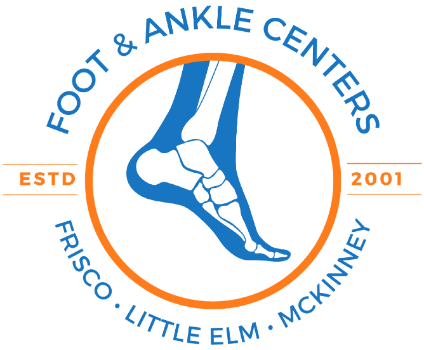Signs and Symptoms of Bursitis at Foot and Ankle Centers
Saturday, February 01, 2025 | By: Foot & Ankle Centers of Frisco and Plano
Signs and Symptoms of Bursitis at Foot & Ankle Centers
Bursitis is a condition that affects the small, fluid-filled sacs known as bursae, which are located throughout the body, particularly near joints. Bursae help reduce friction and provide cushioning between bones, tendons, and muscles. When these sacs become inflamed, it leads to bursitis, which can cause pain, swelling, and limited movement. While bursitis can affect many areas of the body, it is commonly found in the foot and ankle, where frequent movement, pressure, and friction can irritate the bursae.
At Foot & Ankle Centers, our specialists are experienced in diagnosing and treating bursitis. In this blog post, we will walk you through the common signs and symptoms of bursitis in the foot and ankle to help you identify the condition and seek appropriate care.
What is Bursitis?
Bursitis occurs when one or more bursae become inflamed. The inflammation can be caused by repetitive movement, injury, infection, or underlying medical conditions. In the foot and ankle, bursitis most commonly affects the areas where there is frequent friction or pressure, such as the heel, ball of the foot, or the outer ankle.
There are two main types of bursitis:
- Non-infectious bursitis: The most common type, caused by overuse, injury, or pressure.
- Infectious bursitis: Less common, but can occur when bacteria infect the bursa, often after a puncture wound or surgical procedure.
Common Causes of Bursitis in the Foot and Ankle
Several factors can contribute to the development of bursitis in the foot and ankle:
- Overuse or repetitive motion: Activities like running, walking long distances, or sports that involve frequent jumping or pivoting can put stress on the bursae.
- Footwear: Wearing shoes that do not fit properly or provide adequate support can lead to increased friction and pressure on the feet, contributing to bursitis.
- Injury or trauma: A fall, impact injury, or direct blow to the foot or ankle can irritate the bursae and cause inflammation.
- Biomechanical abnormalities: Conditions such as flat feet, high arches, or abnormal gait can place undue stress on the joints and bursae, leading to bursitis.
- Medical conditions: Arthritis, diabetes, or gout can increase the risk of developing bursitis due to changes in joint structure or inflammation in the body.
Signs and Symptoms of Bursitis in the Foot and Ankle
Bursitis presents with a variety of symptoms depending on the location and severity of the condition. Below are the most common signs and symptoms of bursitis in the foot and ankle:
1. Pain and Tenderness
Pain is the hallmark symptom of bursitis. The pain may start as a dull ache that becomes more pronounced with movement or pressure on the affected area. For example, if you have bursitis in the heel (Achilles tendon bursitis), walking or running may trigger sharp pain. Bursitis pain can also worsen when you touch or press on the swollen area, as the inflammation puts pressure on surrounding tissues. The pain may be constant or intermittent and can radiate to nearby areas, depending on the location of the bursa.
2. Swelling
One of the most noticeable symptoms of bursitis is swelling in the affected area. As the bursa becomes inflamed, it fills with excess fluid, causing the area to appear puffy or swollen. In some cases, the swelling may create a noticeable lump that can be felt or seen under the skin. The swelling can range from mild to severe, depending on the severity of the inflammation. Swelling can make it difficult to wear shoes comfortably or engage in physical activity without discomfort.
3. Warmth and Redness
If bursitis is caused by infection (infected bursitis), you may notice that the skin over the affected area appears red and feels warm to the touch. This is a sign of inflammation and infection, and it requires immediate medical attention. Infected bursitis may also be accompanied by fever, chills, and increased pain. If you notice these symptoms, it is crucial to seek medical help as soon as possible to prevent the infection from spreading.
4. Stiffness and Reduced Mobility
Another common symptom of bursitis in the foot and ankle is stiffness. As the bursa becomes inflamed, it can affect the surrounding tendons and joints, limiting the range of motion. For example, you may have difficulty bending your ankle or foot, or it may hurt to flex your toes. This stiffness can make it challenging to walk, climb stairs, or engage in daily activities. In severe cases, bursitis can cause the foot or ankle to become immobilized or difficult to move without pain.
5. Pain During Movement or Activity
The pain associated with bursitis tends to worsen with movement or activity. For instance, running, walking, or standing for long periods can put pressure on the inflamed bursa, causing discomfort. In particular, activities that involve repetitive movements, like dancing, soccer, or hiking, can aggravate the bursitis and increase the pain. Even standing for extended periods on hard surfaces can cause the pain to flare up.
6. Creaking or Popping Sensation
Some people with bursitis may experience a creaking or popping sensation when moving the affected foot or ankle. This sensation can occur if the bursa becomes so swollen that it affects the movement of the surrounding tendons or muscles. You may feel or hear this sensation as you walk or flex the joint.
When to Seek Medical Attention
If you experience any of the symptoms mentioned above, it’s important to consult with a specialist at Foot & Ankle Centers to get a proper diagnosis and treatment plan. If the symptoms are mild, you may be able to manage bursitis with rest, ice, and over-the-counter medications. However, if you experience severe pain, swelling, or redness, or if the pain doesn’t improve with home care, it’s essential to seek professional help.


0 Comments